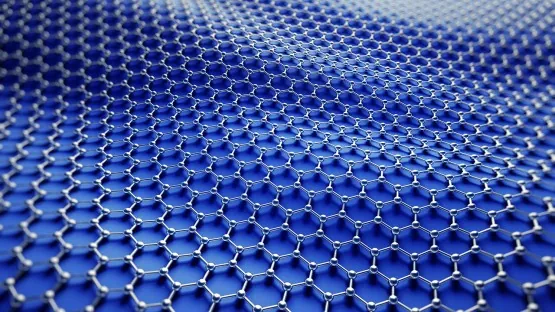
Unlocking the Secrets of Superconductivity: Researchers Discover the Maximum Temperature for Twisted Bilayer Graphene!
2024-11-04
Author: Ming
Introduction
Graphene may be a simple material consisting of just a single layer of carbon atoms, but when scientists stack two layers at a precise angle, known as the 'magic angle,' they unlock a host of extraordinary phenomena, rooming in on the remarkable state of superconductivity.
Groundbreaking Findings at Cornell University
Recent discoveries by researchers at Cornell University have identified the peak achievable superconducting temperature for twisted bilayer graphene – an astonishing 60 Kelvin! This groundbreaking finding is a significant milestone in superconductivity research, presenting a mathematically precise answer that is rare in the field.
Expert Insights
Debanjan Chowdhury, a prominent physics professor at Cornell, emphasized the importance of the research, stating, “This lays the groundwork for understanding the variables we can manipulate to enhance superconductivity in two-dimensional materials.” This insight is pivotal for scientists looking to develop new materials with advanced superconducting capabilities.
Research Team Discoveries
The research team, which included notable physicists such as Juan Felipe Mendez-Valderrama and Dan Mao, explored the fascinating behavior of twisted bilayer graphene, which dramatically changes its properties with minute alterations in external conditions. “Adjusting the electric field allows researchers to transition twisted bilayer graphene from being an insulator to a superconductor, showcasing its unique electrical characteristics,” Chowdhury explained.
Theoretical Advances
In an impressive feat of theoretical physics, Chowdhury and Mao devised a new formalism that computes maximum superconducting temperatures in materials created by twisting and stacking two-dimensional layers. Their method, applied to twisted bilayer graphene, has yielded new insights into the mechanics of superconductivity.
Understanding Superconductivity
Superconductivity is a much-coveted phenomenon where electrons can flow through materials without any energy loss, but it typically only occurs at very low temperatures. Conventional superconductors like aluminum operate at these frigid temperatures due to the high energies at which electrons behave independently. However, in twisted bilayer graphene, the electrons exhibit a highly coordinated motion that allows for a higher transition temperature of around 5 Kelvin, providing hope for future designs of high-temperature superconductors.
Unique Tunability of Twisted Bilayer Graphene
“What sets twisted bilayer graphene apart is its unique tunability,” said Chowdhury. “We can finely control the temperature and angle at which the layers are twisted, enabling us to switch between different states, making it a playground for scientists!”
Future Prospects
Looking ahead, Mao hinted at exciting possibilities, stating that their theoretical framework could apply to materials beyond twisted bilayer graphene, aiming to discover even higher temperature superconductors and other novel opto-electronic properties.
Conclusion
This innovative research not only pushes the boundaries of material science but could also pave the way for revolutionary technological advancements in electronics and energy transmission.
Final Thoughts
Stay tuned as researchers continue to uncover the mysteries of superconductivity and possibly revolutionize the way we understand and use materials in modern technology!



 Brasil (PT)
Brasil (PT)
 Canada (EN)
Canada (EN)
 Chile (ES)
Chile (ES)
 España (ES)
España (ES)
 France (FR)
France (FR)
 Hong Kong (EN)
Hong Kong (EN)
 Italia (IT)
Italia (IT)
 日本 (JA)
日本 (JA)
 Magyarország (HU)
Magyarország (HU)
 Norge (NO)
Norge (NO)
 Polska (PL)
Polska (PL)
 Schweiz (DE)
Schweiz (DE)
 Singapore (EN)
Singapore (EN)
 Sverige (SV)
Sverige (SV)
 Suomi (FI)
Suomi (FI)
 Türkiye (TR)
Türkiye (TR)